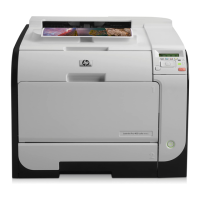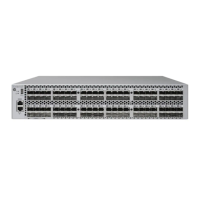Labeled Backup Tape Volume Labels
For labeled backup tapes, BACKUP writes either an IBM volume label or a customized ANSI volume
label (the BACKUP label) at the beginning of the tape.
• The initialized IBM tape, as defined by the IBM-MVS standard, contains:
A beginning-of-volume label (VOL1)◦
◦ A beginning-of-file-section label (HDR1)
◦ A tape mark
• The initialized ANSI tape, as defined in the ANSI standard, contains:
A beginning-of-volume label (VOL1)◦
◦ A beginning-of-file-section label group (HDR1, HDR2)
◦ Two tape marks
◦ An end-of-file label group (EOF1,EOF2)
◦ Two tape marks
NOTE: The BACKUP label type is a customized version of the ANSI label. The labels are identical
except character 80 (from the BACKUP label) is a B instead of a 3. When BACKUP writes to a
scratch ANSI labeled tape, it changes it into the BACKUP label type.
Following this volume label, BACKUP writes all labeled backup tapes in tape format 3. Therefore,
the files on a labeled backup tape are not in the standard labeled tape format (ANSI or IBM).
Using DEFINEs for Labeled Backup Tapes
You must specify a CLASS TAPE DEFINE (instead of a tape device name) in the BACKUP command
to use a labeled backup tape. You create the DEFINE in the same way you create DEFINEs for
ANSI and IBM labeled tapes. If you are not familiar with labeled-tape processing on NonStop
systems (or with DEFINEs), see the Guardian User's Guide. It gives instructions on using different
DEFINEs including CLASS TAPE DEFINEs for labeled-tape processing.
The two differences between using TAPE DEFINEs for backup labeled tapes and for ANSI and IBM
tapes are:
• You can use only a subset of the CLASS TAPE attributes for a backup labeled tape. The
supported attributes are summarized in Table 11. For a complete description of these DEFINE
attributes, see Appendix E: CLASS TAPE DEFINEs.
• You must specify the LABELS attribute as either BACKUP or IBMBACKUP.
Table 11 Permissible DEFINE Attributes for Labeled-Tape Backup
DescriptionUseAttribute
Must be specified as TAPE.RequiredCLASS
Specifies the tape drive to use.OptionalDEVICE
Specifies tape density. If the DENSITY option is specified in the BACKUP
command, it must match this value, and only an open reel tape can be
used.
OptionalDENSITY
Specifies the month, day, and year after which this tape can be
overwritten.
OptionalEXPIRATION
Specifies the name of the tape (file) set. Optional for LABELS BACKUP;
required for LABELS IBMBACKUP.
Optional/ RequiredFILEID
78 BACKUP

